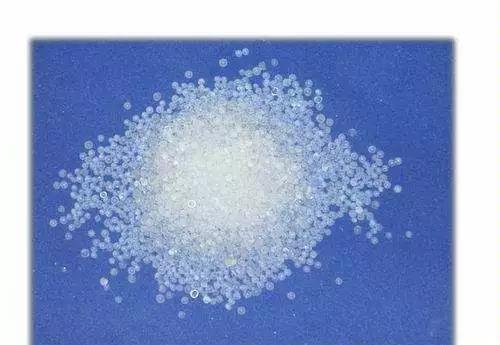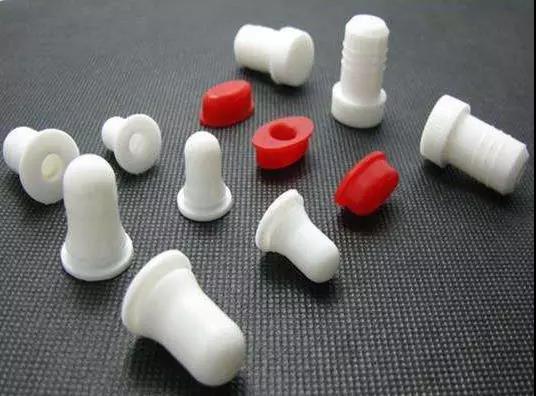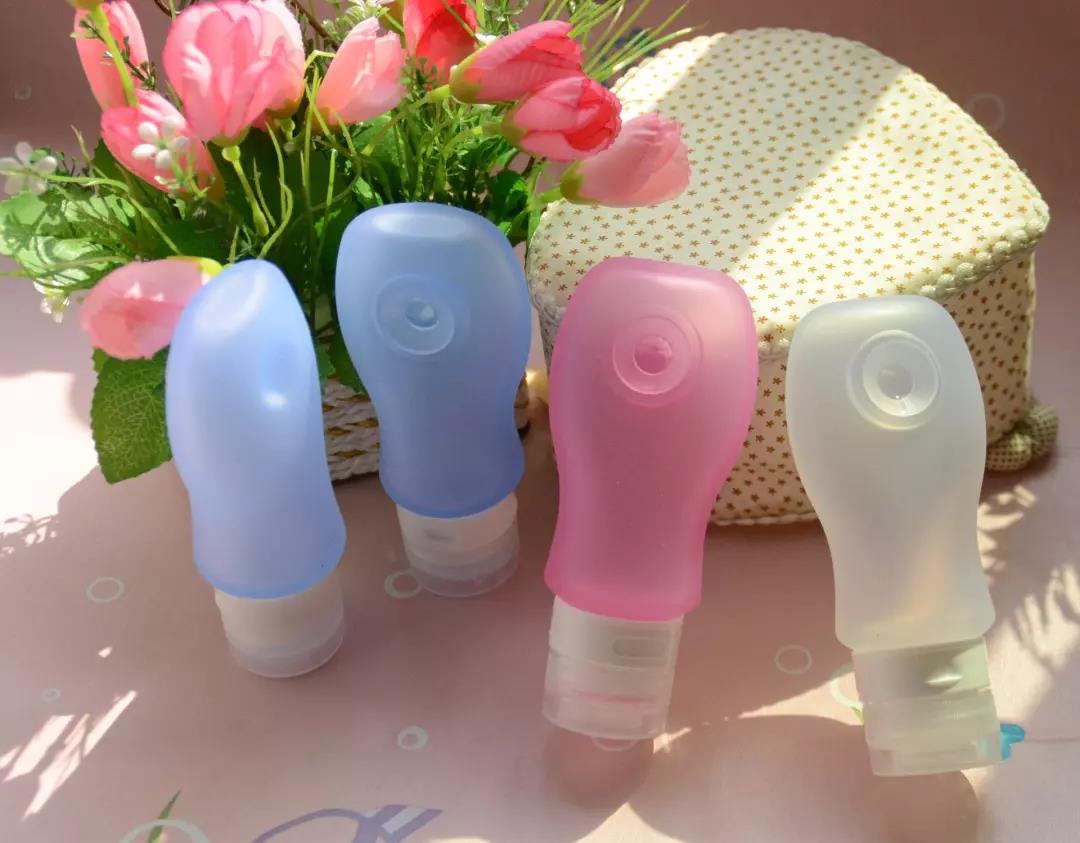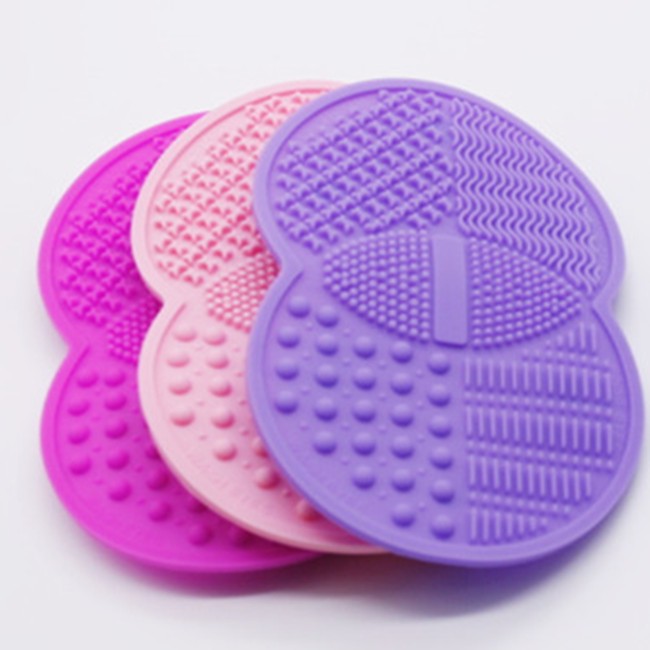Learn about silicone material and molding process together
Introduction: silicone rubber, as travel bottles, sub bottles, gifts and massage instruments, accounts for a large proportion. As an environmental protection material, it is widely used in the fields of maternal and child products, cosmetics, make-up, medical products, outdoor / leisure and furniture. With the continuous adoption of plant extraction formula in the cosmetics industry, It is believed that the cosmetics industry will tend to grow significantly in the future. Therefore, let's have an in-depth understanding of silicone rubber materials and products
- ONE Silicone material definition
Silicone rubber is a highly active adsorption material, which belongs to amorphous material, and its chemical molecular formula is msio2 · nH2O. Insoluble in water and any solvent, non-toxic and tasteless, stable chemical properties, and does not react with any substance except strong alkali and hydrofluoric acid. Various types of silica gel form different microporous structures due to different manufacturing methods. The chemical composition and physical structure of silica gel determine that it has many characteristics that are difficult to be replaced by other similar materials: high adsorption performance, good thermal stability, stable chemical properties, high mechanical strength and so on.

- TWO Silicone Basic classification
- According to the source of raw materials, it can be divided into domestic materials and imported materials Domestic materials mainly include: dongjue, Ruiying, HTC, Tianyu, New Oriental, polymerization and other large manufacturers. Imported materials mainly include: shinyue, Toshiba, Dow Corning, Rhodia, Germany, etc.
- According to performance, it can be divided into ordinary silica gel and meteorological silica gel. Common silica gel (also known as precipitated silica gel) color: translucent, milky white, light yellow, gray, etc. Hardness: 30 °, 40 °, 50 °, 60 °, 70 °, 80 °, etc., commonly used between 40 ° - 70 °. Density: 1.1-1.12g/cm2 elongation: 400% purpose: most of them are middle and low-grade silica gel products such as mobile phone keys, miscellaneous parts and conductive adhesive. Meteorological silica gel (also known as pure silica gel) color: transparent. Hardness: 30 °, 40 °, 50 °, 60 °, 70 °, 80 °, etc., commonly used between 40 ° - 60 °. Density: 1.1-1.12g/cm2 elongation: 600% - 700% characteristics: due to the good transparency and strong tensile resistance of this material. The cost is high. Usage: silicone tube, protective sleeve and other high-grade products that need high elasticity.
- According to physical properties, it can be divided into solid silica gel and liquid silica gel. Solid silica gel is mainly used for molding products. For example: silicone cover, silicone tableware, silicone keys and other liquid silicone are mainly used for extrusion products, such as silicone nipples, silicone tubes and so on.
THREE
Silicone Product characteristics Main performance
- Heat resistance silicone rubber has much better heat resistance than ordinary rubber, and can be used almost forever at 150 degrees without performance change; It can be used continuously for 10000 hours at 200 degrees; It can also be used for a period of time at 350 degrees. It is widely used in occasions requiring heat resistance: sealing ring of hot water bottle, pressure cooker ring and heat-resistant handle
- Cold resistance ordinary rubber is - 20 degrees to - 30 degrees, while silicone rubber still has good elasticity at - 60 degrees to - 70 degrees. Some silicone rubber with special formula can also withstand very low temperature. For low temperature sealing ring
- Weather resistant ordinary rubber degrades rapidly under the action of ozone generated by corona discharge, while silicone rubber is not affected by ozone. And its physical properties change only slightly under ultraviolet and other climatic conditions for a long time.
- Electrical properties silicone rubber has high resistivity and its resistance remains stable in a wide temperature and frequency range. At the same time, silicone rubber has good resistance to high voltage corona discharge and arc discharge.
- Conductivity when conductive fillers (such as carbon black) are added, silicone rubber has conductivity, keyboard conductive contact points, electrothermal element parts, antistatic parts, shielding for high-voltage cables, and thermal conductivity of medical physiotherapy conductive films: when some thermal conductive fillers are added, silicone rubber has thermal conductivity fins, thermal conductivity gaskets, thermal conductivity rollers of copiers and fax machines 5. Radiation resistance the radiation resistance of silicone rubber containing phenyl is greatly improved. Flame retardant silicone rubber such as electrical insulated cables and connectors for nuclear power plants is combustible, but when a small amount of flame retardant is added, it has flame retardancy and self extinguishing; And because the silicone rubber does not contain organic halides, it does not emit smoke or toxic gas during combustion. Various occasions with strict fire prevention.
Air permeability silicone rubber film has better air permeability than ordinary rubber and plastic waxing film. Another feature is that it has strong selectivity for different air permeability. Such as gas exchange membrane, medical products and artificial organs. High hardness: long mixing time, high temperature, strong static electricity, difficult mixing and long mixing time. Low hardness: short mixing time, low temperature, weak static electricity, easy mixing and short mixing time. High hardness: high density, small shrinkage, poor fluidity, easy to use less materials, large ratio, good hand feel and high load. Low hardness: low density, large shrinkage, good fluidity, easy to wind, small proportion, poor hand feel and low load.
FOUR
Silicone Molding process
- Molding process silica gel products can be divided into three categories according to different molding processes
- Molded Silicone products molded
- Silicone products are usually formed by applying pressure through the vulcanizing machine after putting the solid Silicone raw material with vulcanizing agent into the high-temperature mold. The hardness of molded silica gel is usually 30 ° C-70 ° C. The color of raw materials and color paste is transferred out according to Pantone color card number. The shape of mold determines the shape of molded Silicone products. Molded Silicone products are the most widely used in silica gel industry at present. Mainly used for silicone industrial accessories, buttons, silicone gifts, silicone bracelets, silicone watches, key bags, mobile phone cases, silicone kitchenware, silicone mats, ice lattices, cake molds, etc

- Extruded Silicone product
- Extruded Silicone products are usually formed by extruding Silicone by extrusion machine. Generally, the shape of extruded Silicone is long and tubular, which can be cut at will. However, the shape of extruded Silicone has limitations and is widely used in medical devices and food machinery.

Liquid Silicone products are injection molded by silica gel. The products are soft and the hardness can reach 10 ° C-40 ° C. because of their soft characteristics, they are widely used in simulating human organs, medical silica gel breast pads, etc.

The forming principle is to use high temperature and high pressure (the mold temperature needs to be about 165 ℃) for a certain time to make the product physically change, that is, through the bridging of bridging agent, the originally free molecules are connected with each other to form a network structure, which is inseparable to form the product we need. Molding sulfur addition is high temperature and high pressure sulfur addition type. Thermal vulcanization is usually carried out in two stages. Pre vulcanization is carried out under pressure at a temperature of 150 ~ 160 ℃; Post vulcanization is to remove the volatile components produced by the decomposition of peroxides and additives. It shall be vulcanized for 1 ~ 4H (secondary vulcanization) in atmospheric hot air (about 200 ℃). In order to make the vulcanization more stable and better physical properties, the post vulcanization time can be up to 12h or longer.
- The main equipment for forming is mainly open mill, cutting machine, hydraulic forming machine, sand blasting machine, punch, oven, etc.
https://www.pyc365.com/eco_promotional_products/339.html





